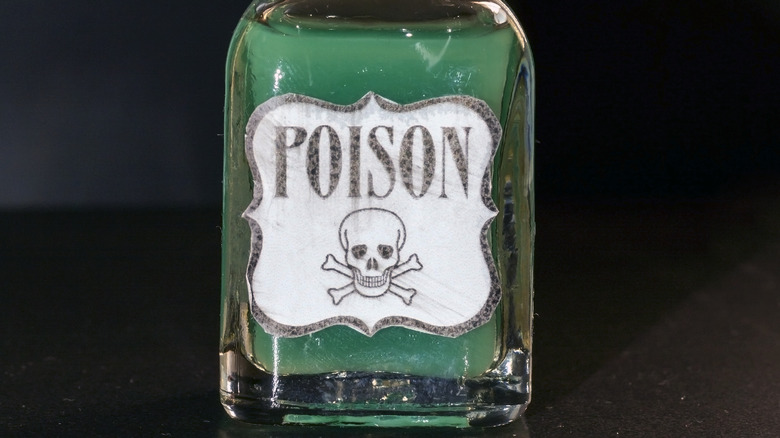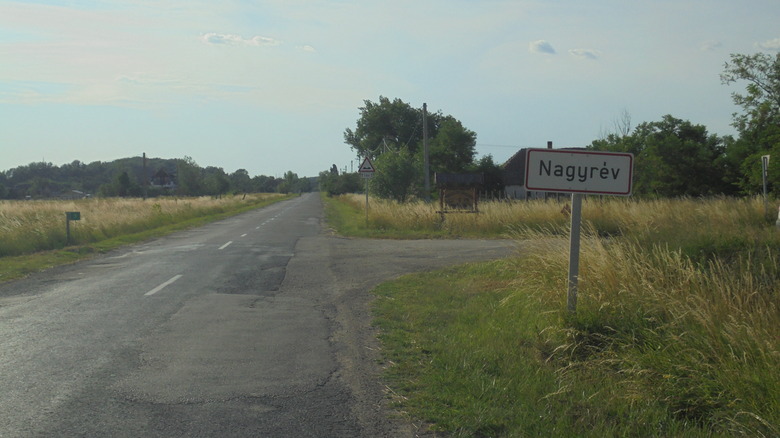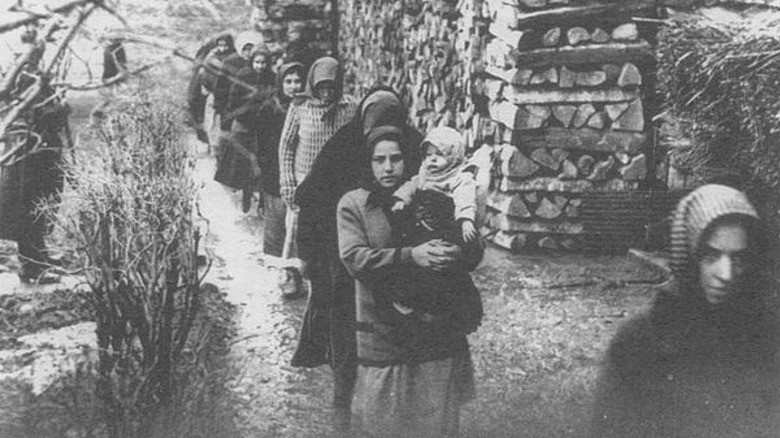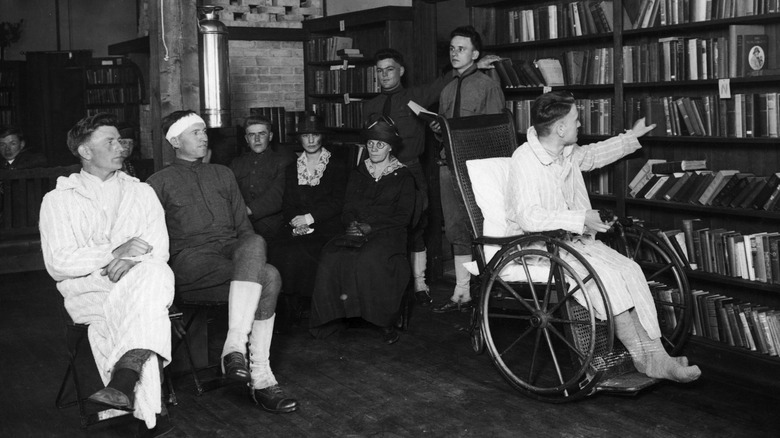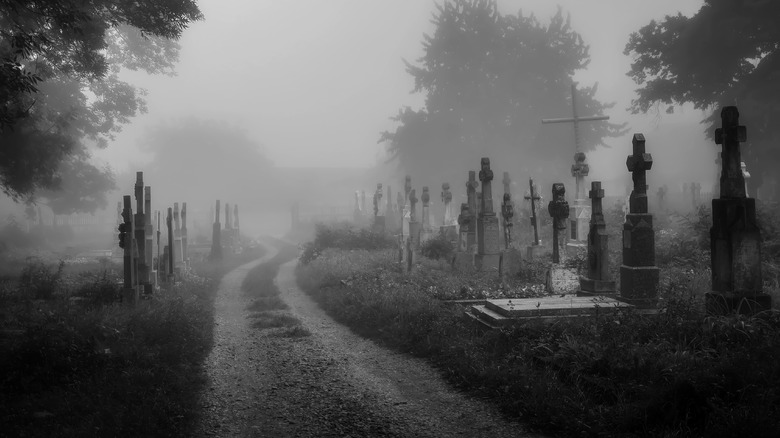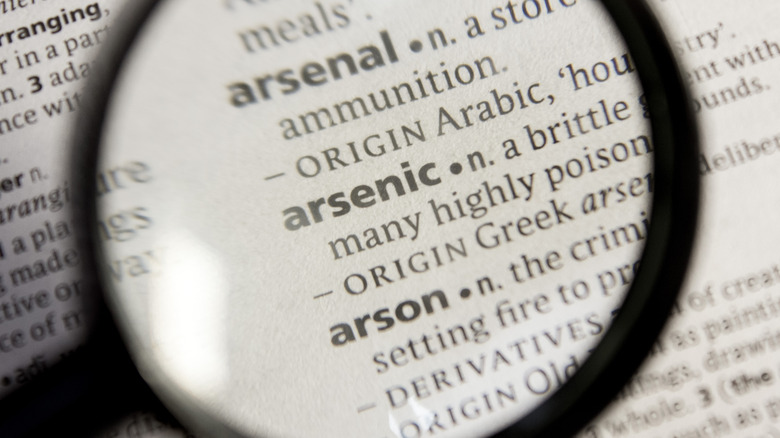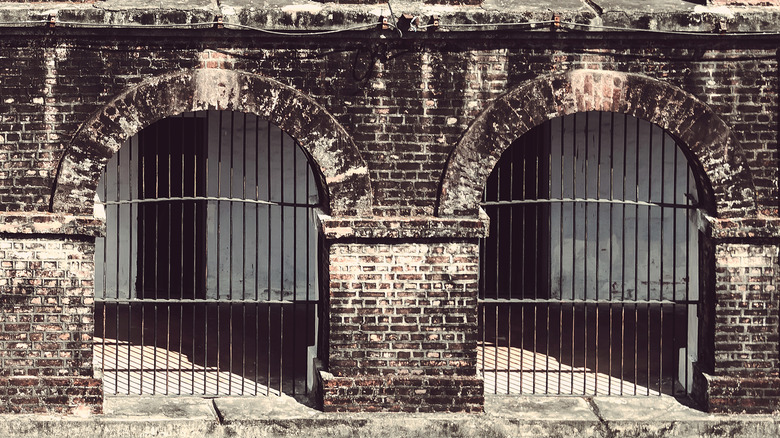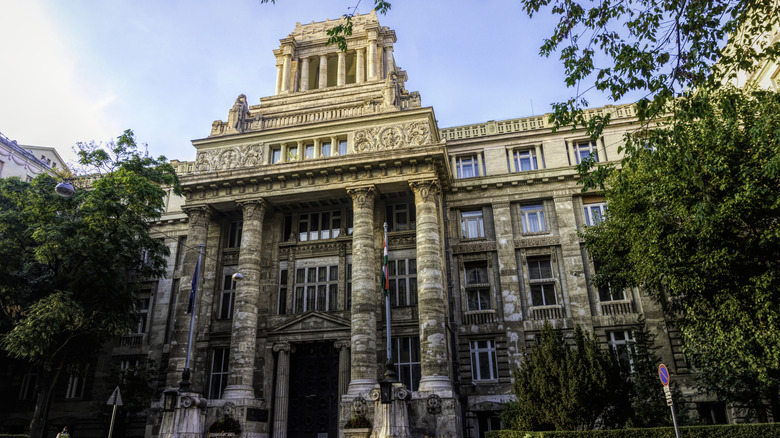The Murderous Story Of The Angel Makers Of Nagyrev
In the early 20th century, a village in Hungary seemed struck by an epidemic. People seemed to be dropping dead left and right for almost two decades. But they weren't dropping dead because of a disease. They were dropping dead from being poisoned.
The story of the Angel Makers of Nagyrév has transformed over the years, weaving into it other stories of mass poisonings. It's turned into a fairy tale that can be used to scare husbands into treating their wives with respect. But the real story is a tangled mess of abuse, ableism, and murder.
Despite the sensational trial that was covered all the way from Hungary to the United States, the motives of the Angel Makers of Nagyrév have never been fully understood. What is known is that dozens of women took other peoples' lives in their hands. This is the murderous story of the Angel Makers of Nagyrév.
Who was Zsuzsanna Fazekas?
In 1911, a woman named Zsuzsanna Fazekas, born Zsuzsanna Oláh, moved to Nagyrév, Hungary, which was part of the Austro-Hungarian Empire at the time. Some versions of this story refer to her as Julia Fazekas. In addition to working as a midwife, Fazekas also performed abortions. At the time, abortions were illegal for both married and unmarried people, but according to Women's and Gender History by Krassimira Daskalova and Susan Zimmermann, those who were married faced a harsher sentence. Abortion has since been legalized in Hungary as of 1953, although the government continues to impose restrictions.
Fazekas helped people access abortions for at least a decade, during which time she was arrested at least 10 times. But she was never convicted for performing abortions. In at least one instance, the abortion charge was related to the high number of infants diagnosed as stillbirths in Nagyrév. According to The Spectator, Fazekas is believed to have been poisoning infants with homemade arsenic.
Because there was no village doctor in Nagyrév, Fazekas also assumed most of the other medical duties in the village and sometimes gave away free medicine. The only other doctor in the area came by just once a week as he traveled through the neighboring villages. As a result, Fazekas soon became a popular figure in the town and became known as Aunt Suzy.
[Featured image by Palotabarát via Wikimedia Commons | Cropped and scaled | CC BY-SA 4.0]
Homemade arsenic
Zsuzsanna Fazekas made homemade arsenic by soaking flypaper in water. Also, the exact origin story of this technique is unknown, one report claims that she discovered her ability to create poison from flypaper when she noticed that her chickens died after eating dead flies from flypaper. But with the flypaper-soaked water, Fazekas could carry around a small vial of arsenic wherever she went.
Arsenic has been used as a poison throughout history. But it can also be ingested through natural contamination of drinking water supplies. And because the symptoms of arsenic poisoning are similar to the symptoms of cholera, SYFY writes that arsenic was an appealing poison that would leave little trace of foul play.
When police ultimately went to arrest Fazekas in 1929, they found over a dozen pint bottles with arsenic water either in preparation or already prepared, according to The American Weekly per Unknown Gender History.
Poisoning husbands
In addition to offering medical aid, the women of Nagyrév also went to Zsuzsanna Fazekas for marital advice. One version of the story claims that one woman went to Fazekas for advice regarding her abusive husband and after Fazekas gave her a jar of arsenic water, other women in the village started coming to her for help poisoning their husbands as well. Fazekas is even reported to have said "Why put up with them? I have a solution." But of course, Fazekas was also profiting off of the poison requests and reportedly made a very tidy sum as a result.
Fazekas worked with Susi Oláh, who was in charge of manufacturing the death certificates for the murders, and attributed all the arsenic deaths to a variety of causes ranging from alcoholism to heart attacks. And according to SYFY, Oláh had also murdered her own husband and even Fazekas's own husband was nowhere to be found and was rumored to have been one of Fazekas's first poisonings.
According to "King of Poisons" by John Parascandola, the motivations for women who wanted to poison their husbands to death varied. Some women were in abusive marriages and saw no way out other than murder. At least one woman testified that she helped her friend poison her husband because of his abuse. Other women saw murder as the only way to return to the independence they had during the war.
Poisoning family members
After some time, the poisonings escalated from abusive husbands to disabled and elderly family members. After the First World War, many men came back with various disabilities, ranging from amputated limbs to PTSD, and some of the women of Nagyrév decided that even if their partners weren't abusive, their inability to contribute economically was enough of a reason for murder, writes The Independent.
This ableist mentality also extended to parents, elderly family members, and children, effectively asserting that only those who could support themselves were worthy of life. And sometimes, it wasn't just ableism that motivated the murders. General greed over inheritances is also said to have been a motive in some of the murders.
Marie Kardos, also known as Marie Aszendi, was one such woman who was part of the Angel Makers of Nagyrév. It's alleged that in addition to poisoning two of her husbands, she also poisoned her 22-year-old son, who had some kind of chronic health condition, according to The Daily Gleaner (via Unknown Gender History).
The murder district
Within a few years, the Angel Makers of Nagyrév had the graveyard overflowing with bodies. So many people had died that by 1920, Nagyrév was known as "the murder district." Although the exact numbers are unknown, it's estimated that up to 300 people may have been murdered by the Angel Makers. But despite the suspicions of the police, it took them almost another decade before they finally started investigating all the murders.
Reports vary as to how the police were tipped off to the activities of the angels. Hungarian-American historian Béla Bodó writes that an anonymous letter to the local newspaper was the first public revelation of the serial killers, according to SYFY. Other versions of the discovery of the Angel Makers include two of the women within the group turning on one another and revealing the poisoning scheme or a medical student who discovers a body with high levels of arsenic and urges for an investigation in the cemetery.
But when police finally exhumed some of the mounting bodies in the cemetery in 1929, they discovered arsenic in over 90% of the bodies, reports inews. Dozens of bodies were also exhumed in the village of Tiszakürt and were also found to have arsenic in their system, but it's unclear whether or not the Angel Makers of Nagyrév were responsible or if it was a separate mass poisoning scheme. Ultimately, no one was ever charged or convicted for the potential arsenic poisonings in Tiszakürt.
Not the first time
This wasn't the first time that poisoning one's husband was popular in Hungary. In 1879, a group that became known as a "husband poisoning society" was found responsible for poisoning and murdering up to eight people, also with arsenic. According to inews, after eight married men died over the course of six weeks in the Szerdahely region, police found that their wives had conspired together and poisoned them. As with the Angel Makers of Nagyrév, the motives of the women ranged from abusive relationships to cashing out a life insurance policy.
At least one woman, Lyukas Kathi, was hanged for her role in the poisonings. Like Zsuzsanna Fazekas, Kathi was the supplier and she sold cakes poisoned with arsenic to anyone who wanted to murder someone in their life, reports Lloyd's Weekly Newspaper per Unknown Gender History. And even after the husband poisoning society was discovered, women in Hungary were undeterred. In 1882, another poisoning society was discovered in Melencze, believed to be responsible for the deaths of over 100 men.
Hungary wasn't the only place where numerous husbands were poisoned to death. In several European countries including Croatia, Romania, and Ukraine, husbands were found to be poisoned to death by their wives throughout the 1880s.
Capturing the angels
In 1929, after the police realized that many of the people buried in the cemetery over the past decade were murdered, they went to arrest Zsuzsanna Fazekas. But Fazekas never ended up facing any consequences for aiding and abetting a mass murder because when police went to arrest her, Fazekas had already died by suicide. Between 25 to 40 people, the majority of whom were women, were arrested for murder in connection to the Angel Makers of Nagyrév. Susi Oláh was among those who were arrested, writes inews.
Ultimately, the behavior of husbands towards their wives reportedly improved after the Angel Makers of Nagyrév were revealed. But poisonings didn't always lead to long-term good behavior because, in the 1950s, an elderly villager claimed that women in Nagyrév "had been murdering their menfolk since time immemorial," per Amusing Planet. It's unclear how factual this statement is, but the Angel Makers' reputation has clearly taken on a life of its own.
If you or anyone you know is having suicidal thoughts, please call the National Suicide Prevention Lifeline by dialing 988 or by calling 1-800-273-TALK (8255).
Angels on trial
In the spring and summer of 1930, up to 40 people went to trial for various murders over the course of two decades. Susi Oláh's sister, Lydia Oláh, was part of the group of accused women and reportedly admitted to murder during the trial. But she justified it, claiming that "We are not assassins! We did not stab our husbands. We did not hang them or drown them either! They died from poison and this was a pleasant death for them!" writes The Crime Historian.
According to "King of Poisons" by John Parascandola, many of the defendants also blamed Zsuzsanna Fazekas during the trial, making her out to be the mastermind behind the mass murder. Others, like Rose Glyba, claimed that she'd never heard about the commandment against killing, writes Evidence Locker.
But there was a great deal of evidence against the women, including one grocer who testified about the enormous amount of flypaper sold in Nagyrév. In the end, only around 10 of them were convicted of murder. And while two were sentenced to death, the majority were given life sentences and others were given sentences ranging from five to 10 years.
Executions
Susi Oláh and Maria Kardos were among those sentenced to death. Some reports state that Susi's sister Lydia Oláh was also sentenced to death. Maria Kardos was hanged and it was reported that she became the first woman to be hanged in Hungary in 80 years when she was executed in January 1931, according to Kleine Volks-Zeitung per Unknown Gender History. And although Kardos requested clemency from the Austro-Hungarian Empire, the request was rejected and her lawyer was unable to obtain a pardon before she was hanged.
By 1931, the authorities were trying to resolve the case of the Angel Makers of Nagyrév as quickly as possible, so there was never really a thorough excavation done of all the cemeteries in the region. As a result, the real number of victims remains unknown and could be several hundred. And it's unknown if every woman who was involved in the mass murder was part of the trial.
But this wouldn't be the end of mass poisonings in Hungary. The New York Times reports that just a few years later in 1935, nine women went on trial for poisoning their husbands and relatives in Dbreczen. Meanwhile, the sensational story of the Angel Makers of Nagyrév continued to capture people's imaginations over the years. In 2004, a village pastor in Nagyrév even suggested creating an arsenic museum to shine a light on the activities of the Angel Makers instead of shamefully hiding it, according to transindex.
